#with a female vocalist that sounds more suitable for that one specific song
Explore tagged Tumblr posts
Text
did y'all fuck with wdywfm because you genuinely like wdywfm or did you just fuck with wdywfm just because there's noah's pretty ass singing it?
Cause VAN literally has the same industrial influences as wdywfm but i haven't seen all that fuss about wdywfm ever
It makes y'all look dumb af honestly
#how many times have i typed wdywfm lol#had to get this off my chest bc i am genuinely fascinated with how tables turn when you switch the attractive male lead singer#with a female vocalist that sounds more suitable for that one specific song#and i don't even like her that much#mia talks bad omens
2 notes
·
View notes
Photo







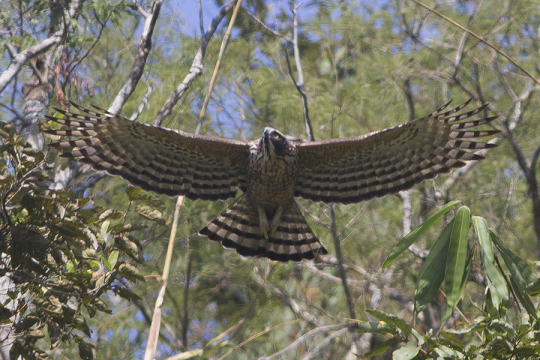

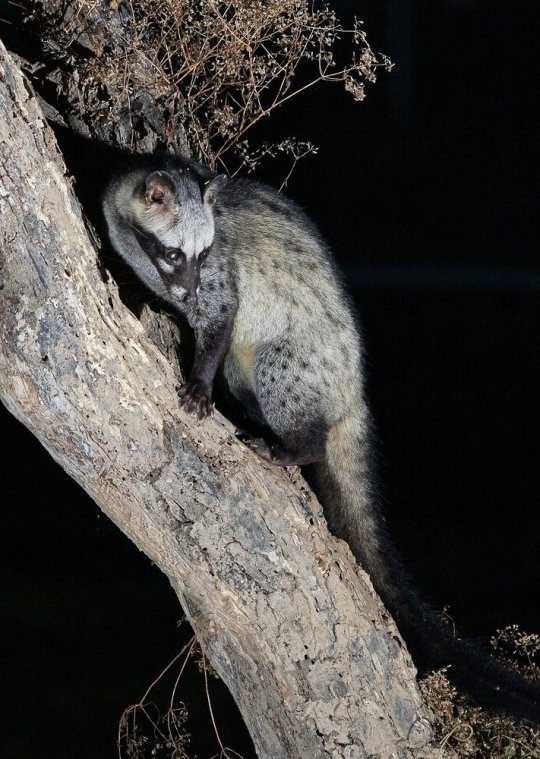
Ace Attorney Daemons - Prosecutors
Animal species and reasoning behind each choice under the cut, as well as links to other groups of characters!
Miles Edgeworth - Great Pyrenees. I originally started looking at big white dogs because I wanted to see if something similar to Pess would be suitable, and I think I found one. This breed is big and fluffy, which frankly I think would be needed for Miles growing up with the von Karmas. But honestly, his daemon is intelligent and powerful. Generally calm, but capable of leaping into swift action. However, it is at the same time at heart a protector (of livestock, traditionally) more than a predator. I think his daemon settling in this form when he is a teen would be a great way to illustrate his true nature, underneath all the Demon Prosecutor stuff (I expect he and she would be at odds for a while). Additional details I like are that these guys do tend to be more reserved with strangers and can be somewhat stubborn, and also they do shed a fair bit. I just enjoy the image of Miles having to constantly brush his gigantic floofball of a daemon and lintroller all her fur off his suits. A final thing, which I didn’t really intentionally plan, is that all prosecutors have bird daemons except Godot, who used to be a defense attorney, and Miles. So he stands out a little bit there, which I think works well too - he would be all the more determined to prove himself as Bratworth once his daemon settled in a form atypical for the profession.
Franziska von Karma - Harpy eagle. I put Manfred in the villains list since there’s no space for more prosecutors here, but it just seemed fitting to me that von Karmas typically settle as eagles. They are sharp-eyed predators, generally solitary, and look incredibly fierce, just in general. As for the harpy eagle in particular - they are huge, first of all; their claws are the same length as brown bears’. They are among the largest eagles in the world, and sometimes considered the most powerful. This seems only right for Franziska. They mostly eat monkeys, but can go after pretty much anything as they are at the top of their food chain. They can fly nearly straight up and turn their head upside down, and wait nearly a full day to snatch their prey. Franziska too is maneuverable and ridiculously determined. The head-feathers you can see slightly lifted in the photo are pretty cool, too; they rise up into a distinctive crest when the eagle feels threatened, and it actually looks a bit derpy. Which reminds me somehow of Franziska’s scornful “fool” name-calling and how it can often get to the level of absurdity. They are monogamous and fiercely protective parents, which I think can be a nice match to how Franziska really isn’t so heartless after all. And another detail that fits really nicely with her initial rivalry for Miles is that harpy eagles usually lay two eggs, but typically only the first-hatched survives. The other is ignored or even killed by its older sibling.
Klavier Gavin - Superb lyrebird. Female lyrebirds don’t look nearly as impressive as the males, and they don’t do the dramatic dances either. But they are still incredible vocalists, able to imitate sounds from at least 19 other species. And their songs tend to be mostly used during foraging and defending their nest, as opposed to attracting a mate. Obviously Klavier needs a songbird for his daemon, but I think the female lyrebird specifically is great because of those details. Her less exciting (though still pretty) plumage might not match his outer image, but he is one of the best prosecutors of the series, dedicated to the truth from the very beginning. He’s a lot more serious than he might come across, and his daemon reflects that. The typical songs match up with that too; he loves music and his daemon does too, but it’s not what either of them care about most, and the subject of typical female lyrebird songs show that well. Similarly, though a bird like most prosecutors, his daemon is not a bird of prey. He’s never really been in it for ��the hunt’, after all. One last reason I like the lyrebird for him is that, contrary to most daemons being quite around people they don’t know well, I suspect his daemon would be fairly vocal and probably sing with him in his band.
Simon Blackquill - Japanese mountain hawk-eagle. Before you ask, yes. Yes I did choose his daemon from birds who look most like Taka. I mean, of course. The wiki listed three, and I looked them all up and thought the mountain hawk-eagle appeared closest. As a bonus, it has a Japanese subspecies, which is fitting for samurai man here. They tend to be quiet most of the time, though they have a distinctive cry. This seems fitting for Simon, as he is generally not super talkative. They hunt their prey from a perch, going after small mammals on the ground or other birds, so the perching on his shoulder all the time doesn’t have to change either. Another fitting detail is that females are extremely defensive of their nests and young, apparently willing to fight to death to protect them instead of getting scared away. They also watch and feed their young for a while after they could be self-sufficient. This fits so well with Simon’s willingness to be put to death to protect Athena, obviously.
Godot/Diego Armando - Asian palm civet. I took a slightly different approach for his daemon, and just googled animals that eat coffee. But I’ll get to that in a minute. First, they are nocturnal, solitary, and can just be hard to locate. This fits well with Godot’s whole ambiguous/mysterious thing he’s got going. They’re good climbers and quite nimble/speedy but still vulnerable to predators. Fitting, I think, since he was caught both as Diego and Godot. He tends to be clever to a point but then make a fatal mistake. They also are pretty adaptable, getting used to urban life quickly, which can relate to him adjusting easily to becoming a prosecutor. However, I would be lying if I said the main reason I like this daemon for him wasn’t because they eat coffee. More than just that, the coffee cherries (of which they are said to select only the best) get fermented in their guts, and when they’ve been pooped out, are used to make a very expensive coffee called “kopi luwak.” Now, granted, when I looked this up it seems that the result doesn’t taste especially good and is pretty much just famous as a novelty thing, but I think Godot’s daemon would enjoy coffee just as much as him, and I find the fact that he could, um, prepare his own if he wanted, hilarious.
.
Detectives, Feys, Misc. Lawyers, Villains, Witnesses, Wright Anything Agency
#ace attorney#miles edgeworth#franziska von karma#klavier gavin#simon blackquill#godot#daemons#aa daemons
38 notes
·
View notes
Text
Komitas: Divine Liturgy Album Celebrates the Musical Mastery of an Armenian National Treasure
New Post has been published on https://armenia.in-the.news/culture/komitas-divine-liturgy-album-celebrates-the-musical-mastery-of-an-armenian-national-treasure-36829-15-07-2020/
Komitas: Divine Liturgy Album Celebrates the Musical Mastery of an Armenian National Treasure

By, Christine Aghakhanian
Three years ago, Ambassador Tigran Mkrtchyan embarked on a journey to pay homage to the father of Armenian classical music, Komitas Vardapet, resulting in a rich musical album titled Komitas: Divine Liturgy, released by DELOS records on July 10.
After years of planning and collaboration led by the Ambassador, the 150th anniversary concert honoring Komitas Vardapet and his Divine Liturgy by the Latvian Radio Choir, under the artistic direction of composer Sigvards Klava, was held at St. John’s Church in Riga, Latvia. The three-day concert in September of last year, was recorded, giving birth to the newly released album with the musical arrangement of composer Vache Sharafyan, featuring Komitas’ final works just before his deportation during the Genocide.
The Latvian Radio Choir, the first non-Armenian speaking mixed choir to perform Komitas’ liturgies, is accompanied by award-wining soloist Deacon Hovhanness Nersesyan (bass) of the Araratian Pontifical Diocese and tenor Armen Badalyan, both of whom are graduates of the Komitas State Conservatory in Yerevan, soloists at the Armenian National Academic Theatre of Opera and Ballet and vocalists at the Etchmiadzin Cathedral.
Ambassador Tigran Mkrtchyan
Ambassador Mkrtchyan explains that the inception of the project was initiated when he asked the Latvian Radio Choir to perform a few of Komitas’ pieces during their concerts. The performances were such a success, that he was convinced the choir could masterfully perform an entire concert of Komitas’ works. That is when conductor Sigvards Klava decided to travel to Armenia and stay at the Holy See of Etchmiadzin for inspiration, along with the collaboration of famed Armenian composer Vache Sharafyan.
“He [Klava] wanted, he needed to feel closer to the Armenian religious life, spiritual music and Komitas,“ said Ambassador Mkrtchyan. “So, a few days spent in Etchmiadzin and Yerevan, meetings with Komitas scholars, visits to religious sites in Armenia were of immense importance to bring Mr. Klava closer to Armenian culture. Later we invited from Paris, Mkrtich Mkrtchyan, a musician and Komitas scholar, to work with the choir, to present the Armenian musical traditions and Komitas. The singers also visited the Armenian Apostolic Church in Riga and had a meeting with Ter Khosrov Stepanyan, who presented them the Armenian religious traditions and spiritual music. Thus, it took three long years to mature this project, and then it was time to prepare for the recording itself,” he added.
In 1892, Komitas began working on the Divine Liturgy, his final work with ten versions, all of which were created for male choirs. The final version, presented on the album, dates from 1914-1915, just before Komitas’ deportation from Constantinople to a prison camp in Cankin.
Vache Sharafyan
Composer Vache Sharafyan believes that the original male version was written to be sang during church liturgies while the mixed choir version of the musical score he transliterated to Latin is more suitable for stage performances.
“The male choir and mixed choir have very different types of the musicality, timbres, colors etc.,” Sharafyan explains. “It was important to create a version of Komitas’ Liturgy based on his male choir version that could be sang by the mixed choirs, because there are more mixed choirs in the world. Meanwhile it was also very important to keep the music as close to the original male version of Komitas’ idea as possible and also to use the richness of the vocal beauty of the female and male voice combinations and to create a complete mixed choir version. I am sure that if Komitas had a chance to work after 1915, he would have definitely created such a version himself. But unfortunately, after the 1915 Armenian Genocide in Ottoman Turkey and until the end of his life in 1935, Komitas was in the hospital for mental illnesses in Paris and never wrote another note,” he added.
Ambassador Mkrtchyan discussed some of the challenges of having a non-Armenian speaking choir conduct the liturgies and attributes this phenomenon to the fact that the liturgy is written in Armenian for an all-male choir. He also explained how those obstacles were overcome with a lot of hard work and determination.
“Komitas Vardapet has left us one of the most beautiful liturgies in the history of music,” revealed Ambassador Mkrtchyan. “Soloists simply have to be Armenian or be fluent in Armenian as the parts for the tenor and bass can be performed only by such persons. But during our long and painstaking preparations, we managed to address all of these issues, I hope, successfully. First, Mr. Mkrtchyan worked with the choir, also on their Armenian, presented them nuances of Armenian spiritual music. Then a Latvian scholar of Armenian studies, Valda Salmina, worked with them on their Armenian. And eventually Vache Sharafyan worked with the singers both before the concert and during the recording. Therefore, I dare say, the choir sounds like an Armenian choir,” he added.
Composer Sharafyan talked about his experience working on the album: “I had great time working with the Latvian Radio Choir and its choirmaster Sigvards Klava. The Latvian Radio Choir consists of wonderful musicians and has a unique rich timbre and ability to open and express the very hidden spirituality and nuances in the music. It was also very important to have the Armenian wonderful soloists Armen Badalyan and Hovhannes Nersesyan … They helped a lot to keep the Armenianness of the whole sound.”
Komitas
Komitas collected, transcribed and researched more than 3000 pieces of Armenian folk music. Most of it has disappeared and only about 1200 pieces are in existence today. He arranged authentic folk songs of rural peasants turning simple material into beautifully sophisticated polyphony. It is said that Komitas did for Armenia what Bartók did for Hungary. He had a voracious appetite for songs, and his transcriptions reflect a remarkable ear, seamlessly interweaving threads of music, movement, and complex social relationships.
Ambassador Mkrchyan believes it is vital for the next generation to preserve Komitas’ legacy: “I think, the Armenian youth especially needs to know more about Komitas Vardapet’s contributions to the Armenian culture and arts, because Komitas is one of the strongest pillars on which Armenian cultural identity is based,” he said. “Thanks to him, we have several hundreds of unique sacred and spiritual songs, which he spared no effort to collect from around the Western Armenia. At the same time, Komitas having studied in Europe, knew very well what the uniqueness of Armenian culture was in the context of western civilization and how best to present it to international audience. I would say that the more we know his music, the more we know of him, the closer we are to our roots,” he added.
The album itself is accompanied by a booklet featuring the entire text of the liturgy in Armenian translated to English with Latin transliteration, allowing the listener of the recordings to sing along with the album. Also included is Komitas’ autobiography translated to English along with written sections about the life and music of Komitas by Vache Sharafyan and Vache Barsoumian.
“Komitas summarizes the collective consciousness of the Armenian nation, our aspirations and pain,” said Ambassador Mkrtchyan. “As we know all of his music was created before April 1915, before life stopped in the biggest part of the historical fatherland of Armenians, as the horrors of the Armenian Genocide which he witnessed were too much for a human being to tolerate. I hope Komitas gets a much wider and better recognition worldwide,” he added.
Composer Sharafyan also believes Komitas’ work should be better known around the world. He states that the music of Bach, Mozart and Beethoven is widely known because those men were from European countries where they had the opportunity to create art that was performed for audiences all over the world.
Komitas with his Gusan Choir, May 12, 1913 Constantinople
“Komitas was born in a country where there wasn’t real art life,” said Sharafyan. “There was poverty, occupation, invasion, genocide, war, there was the question of the existence of the Armenian nation and no real art life was possible in such a situation. Komitas studied in Berlin and found and established an absolutely new approach to the music based on the national value and discovered another sense of harmony, polyphony, melody. Throughout history we know many examples when music of the great composers are rediscovered later and I am sure Komitas is the one whose art is deserving to be discovered by the world,” he added.
[embedded content]
According to Ambassador Mkrtchyan, future cultural events and concerts in Estonia featuring the Liturgy of Komitas and Tigran Mansuran’s Requiem in Kaunas with Grammy Award winning choirs have been postponed due the to the COVID-19 pandemic. “From amongst the supporters I would like to thank specifically the Ministry of Education, Science, Culture and Sport of Armenia for acknowledging the significance of this project and stepping in with its considerable support,” said Ambassador Mkrtchyan. “Sigvards Klava was hosted in the Holy See of Etchmiadzin by the invitation of His Holiness Catholicos Karekin II, the supreme head of the Armenian Apostolic Church. The Armenian Apostolic Church in Riga and Ter Khosrov Stepanyan did an amazing job in presenting the Latvian Radio Choir with Armenian spiritual music traditions and I would like to thank Ter Khosrov for that. I would like to thank also OrganiQ company, and especially Ovik Mkrtchyan and Mkhitar Mkhitaryan for their generous support without which this idea would not be realized. Aram Arutyunyan was of great support as well. And also I would like to thank our sponsors from Armenia, the Balasanyan Family Foundation whose contribution to the Armenian musicians’ participation in this concert has been vital.
For more information on Komitas: Divine Liturgy, visit: https://delosmusic.com
Read original article here.
0 notes
Text
A List From Fantastic Bars To Hang Out In.
Are you seeking a simple way to fill an area along with songs off your MP3 player or even iPod that sounds terrific? It is suggested that music is certainly not regularly played for your little one; else they start to consider it a normal history noise. Giant species, like the Great Dane, possess a life span of no more compared to One Decade as well as big male Danes could simply reside for 7 or 8 years. You can read more detailed details below with this Beatnik's Speak Ukulele Testimonial, there are additionally online videos which experience just what is on call and also just how that may help strengthen you as a Ukulele player (ensure to flick through you-tube likewise as there are awesome online videos that provide great amateurs Ukulele ideas). Possibly the best hit of the cd is actually Girls Merely Desired To Enjoy Yourself," the online video which succeeded Finest Female Video clip at the 1984 MTV Video Awards. The initial is that the broadcast attribute performs not appropriately combine with the music command functions of the apple iphone, as stopping briefly or quiting that will demand you to begin it back up off the real app. Songs can assist us to draw out our temper issues and also to cope with them in a good method. Nevertheless, just knowing a few key pointers can mean having fantastic gos along with your camera. Acquire all of them to accomplish their absolute best dancing moves to the songs and make certain the adults whoop, support, and also look ideal terrified! I merely wished to find songs, or even create music, which I didn't end up performing till eventually, that created me think, created people feel the way I experienced when I heard wonderful vocalists that I actually enjoyed, and listened to popular music that I cherished. As an alternative, he continues to develop scores the means he has for so many years, sitting at a creating desk with a pencil and also a pile from blank scoring pieces, meticulously recording the music he visualizes. Quincy, your songs could never ever be essentially in comparison to you are as a human being." That's exactly what this's about. Our company talk to one another as well as content to every various other, send e-mails, log on as well as discover just what our experts should know online, our experts intend and also purchase holidays, purchase travel tickets, hear songs or even an audio publication and receive paths on the best ways to reach our destination: all without avoiding the automobile, and also we typically aren't http://poznajpielegnacja4u.info/ also at work yet! Though promoting your kid with some music courses will be actually the greatest method to show a child to play Ukulele, this for a lot of moms and dads may appear method too pricey and people just perform not have the money for this. The sound seems to be to become level in some cases, however simply when you participate in specific form of songs. The Music: Look at resident band John Molina & Krueger along with Jeff Catz obstructing out to classic rock-and-roll every Monday with Sunday. That has brought about a lifelong admiration for songs and also unimaginable hours from enjoyment!If you understand a child which does not have path or possesses a love of music, learning the best ways to participate in the piano can be lifechanging. One terrific plus, is that it is compatible with the iPhone 4. The majority of sound speaker drops anchor for the iPod are actually merely suitable with the iPhone 3 and earlier.
0 notes
Text
My Top 100 Favorite Albums of All Time (Part 4: 40 - 21)
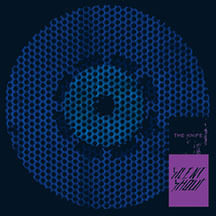
40. Silent Shout – The Knife (2006)
The first of two entries on this list involving experimental Swedish electronica musician Karin Dreijer Andersson, Silent Shout is a fine example of her most recognizable project, The Knife, which was essentially a collaboration with her brother Olof. The album is marked by an unmistakably Nordic sensibility, with a bizarrely sparse and wintry feel, and primarily narrated by Andersson in eerily pitch-shifted vocals that sound frail and petite at some points, and possessed by ghouls at others. Basically, imagine Björk on sulfur hexafluoride, and singing about the bodily decay of getting older, and you have a decent idea what to expect. There is something oddly unsettling about a female vocalist artificially lowering her voice into a male register, particularly for a song like "One Hit", which tackles the subject matter of male chauvinism rather bluntly. But if you stick around through the creepy and humorous bits, there are more than enough genuine moments which shine as well.
Prime cuts: "Silent Shout", "Marble House"

39. Animals – Pink Floyd (1977)
The shortest of Pink Floyd's masterpieces from the 1970s is also their angriest. With a narrative that borrows from George Orwell's Animal Farm, the album Animals is a forty-minute critique of the social stratification of capitalist society, with the band delivering surgically-precise attacks on businessmen, political authorities, and the unwitting masses who cede control of their ultimate fate to power-crazed crooks who couldn't care less. Some of my all-time favorite Pink Floyd lyrics come from this album, specifically because Roger Waters really did not pull any punches (including some particularly scathing lines directed at Margaret Thatcher and Christian morality advocate Mary Whitehouse).
Prime cuts: "Dogs", "Pigs (Three Different Ones)"

38. Lunatic Soul II – Lunatic Soul (2010)
As you might guess from the Roman numeral II in the title, Lunatic Soul II is actually a narrative sequel to Lunatic Soul's first album. Picking up where the last one left off, the story follows the protagonist through his further adventures in the afterlife. The album sets itself apart from its previous installment, however, by being a bit more kinetic: where the first part was content to tap into a wellspring of bittersweetness and melancholy and linger there, the emotional arc of the second part is a bit more daring and diverse. There are also fewer instrumental tracks here, which (as beautiful as they are) does seem to make a difference in the album's sense of gravity. Between the two albums, "Escape from ParadIce" is by far the wildest moment in the entire tale. And the story is wrapped up beautifully with "Wanderings", an epilogue containing a gentle electronic piano melody and echoed vocals, which (to me, at least) is vaguely reminiscent of 80s Phil Collins.
Prime cuts: "Suspended in Whiteness", "Escape from ParadIce"
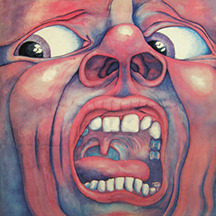
37. In the Court of the Crimson King – King Crimson (1969)
An absolute bona fide progressive rock classic, King Crimson's debut album is likely their most iconic, as well as the only one featuring the vocals of future Emerson Lake and Palmer singer Greg Lake. Consisting of only five songs, each between six and twelve minutes long, the album is largely a blend of jazz and classical influences with unabashed British psychedelia. Lest you think it a poor man's Pink Floyd, though, there's also a distinctly darker undertone and harder edge than most contemporary releases, especially noticeable on the first track, "21st Century Schizoid Man" and the elegiac "Epitaph" (the climax of which is just otherworldly). Simply put, there's a compelling case to be made that all of the subsequent hard progressive rock bands which I love so much– Porcupine Tree, Tool, and Riverside in particular– owe their existence largely to this album.
Prime cuts: "21st Century Schizoid Man", "The Court of the Crimson King"

36. Polaris – Tesseract (2015)
With vocalist Dan Tompkins rejoining the band in 2014 after his 2011 departure (just after the release of One), Polaris finds Tesseract on familiar ground. But it's also obvious that the band had grown so much in the three years that they were apart. Ironically, by losing Tompkins, they actually found their voice, such that when he returned, all the posturing about forcing themselves to fit perfectly into a preconceived djent formula had been abandoned, and they were able to pursue a much more organic (and ambitious) trajectory. Polaris is a concept album, built on a narrative set in an apparently dystopian future. Unlike Tompkins' first recording with the band, there is nary a harsh vocal track to be found, save for the very end of "Cages" (but even that is toned down compared to earlier material). Instead, Tompkins is given free rein to contribute more melodic and technically impressive performances. When those vocals are combined with their matured instrumentalism, the result is an album which serves as a fantastic example of the ineffable expressiveness which makes Tesseract a compelling listen.
Prime cuts: "Survival", "Seven Names"
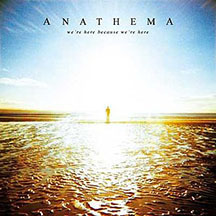
35. We're Here Because We're Here – Anathema (2010)
I mentioned this album by name in my self-published novel Even Stars Die, and for good reason. It was my first Anathema album (as well as the band's first album released with Kscope), and it succinctly evoked a sense of aesthetic appreciation and purpose at a time when I was going through an existential crisis (admittedly, a frequent occurrence in my life). Older Anathema fans may have been disappointed in the band's change in sound from doom metal to a friendlier sort of progressive rock, but the latter sound suits me just perfectly. From the first notes of "Thin Air", I was hooked. Then I heard "Summer Night Horizon", with its faster pace, haunting piano, and blazing guitars, and I was completely sold on the album after just two songs. The rest of the album continues in the same vein: "Everything" was the first Vincent Cavanagh and Lee Douglas duet which really struck a nerve with me, "Get Off Get Out" provides the back half of the album with a moment of raucous abandon, and the brief interlude "Presence" contains a vocal sample of a discussion about "com[ing] to terms with one's own mortality"– which, in my case, was actually extremely helpful and comforting in my own struggle with the subject. If being able to experience a beautiful album like this isn't a good reason to be alive, then what is?
Prime cuts: "Thin Air", "Summer Night Horizon"
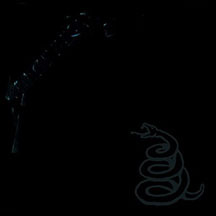
34. Metallica [Black Album] – Metallica (1991)
I find that the Black Album tends to be a polarizing album for Metallica fans. For some of us, it represented a band that was unwilling to continue rehashing the same formula over and over, and longed to grow and change as artists. For others, it was nothing less than a betrayal of the band's no-compromise 80s thrash metal roots, and the first signifier of a period in the band's history marked by shorter hair and the presence of some mellower songs. ("A ballad?! Metallica doesn't do fucking ballads, man!") But regardless of one's stance on the album, it's impossible to deny that it was a significant milestone in their discography, where they expanded from a niche audience of headbangers to a more mainstream acceptance. For me, this was among my earliest impressions of Metallica, during my era of adolescent rage, and it sounded suitably hard-edged to me. There's no contest: I'd much rather listen to "Sad But True" than listen to naysayers, any day of the week.
Prime cuts: "Enter Sandman", "Nothing Else Matters"

33. Rapid Eye Movement – Riverside (2007)
My initial introduction to Riverside's music (after discovering them via Lunatic Soul) was their third album, Rapid Eye Movement, which forms the final piece of a conceptual trilogy (the other two pieces being the albums Out of Myself and Second Life Syndrome). The album starts with a strong opening track, "Beyond the Eyelids", and transitions into a single-heavy first half containing "02 Panic Room", a bass-heavy song with a sound owing much to Tool, and the hypnotic Middle Eastern-influenced "Schizophrenic Prayer". The second half of the album quiets down a little, containing the two softer acoustic compositions "Through the Other Side" and "Embryonic", before launching into the 13-minute epic finale, "Ultimate Trip". Despite being the end of the trilogy's narrative, this was a great album to acquaint me with Riverside, as it displayed Mariusz Duda's vocal style, as well as the dynamic range of the band's material.
Prime cuts: "Schizophrenic Prayer", "02 Panic Room"
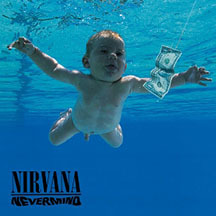
32. Nevermind – Nirvana (1991)
Admit it, you knew this album was going to show up on this list eventually. I mean, come on. I grew up in the 90s. Nevermind is an obligatory album for any 90s kid. It was only a matter of time. And really, what can I say about this recording that hasn't been said a million times before by music journalists and other list-makers? The only new thing I have to add is my personal experience, which can be summed up pretty succinctly in one word: revelatory. You want to know why I gravitate so strongly toward hard rock? Answer: Nevermind. This was the album that sealed the deal for me. Before Nevermind, I was a naïve kid struggling to figure out what sort of modern music he liked. I was 14 or 15 when I bought my copy, and I never looked back. I suddenly knew exactly what kind of music really spoke to me. In terms of the development of my musical tastes, I really can't think of many others that were quite as pivotal to me.
Prime cuts: "Smells Like Teen Spirit", "Come as You Are"

31. White Pony – Deftones (2000)
I came for Maynard James Keenan's appearance on "Passenger", and stayed for the rest of the album. After all, Deftones has been one of the biggest success stories to emerge out of the initial wave of nu metal bands in the 90s– a band that was able to transcend the angst and adapt to changing tastes. Their third album White Pony was a watershed moment– simultaneously breaking new ground for them, and also becoming one of their most massive commercial hits ever. Singles "Change (In the House of Flies)" and "Digital Bath" (and on the reissue, "Back to School (Mini Maggit)") received heavy airplay on rock radio and MTV, while "Rx Queen" and "Knife Prty" contribute some of the album's more affecting and experimental moments. Nearly two decades later, it still holds up as an outlier in a genre that wasn't exactly known for being adventurous or introspective.
Prime cuts: "Digital Bath", "Change (In the House of Flies)"
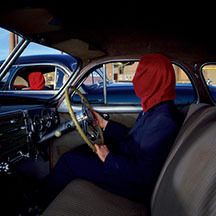
30. Frances the Mute – The Mars Volta (2005)
Frances the Mute was released in the summer between my first and second years of college, while I was living in Florida. I had seen the video for "The Widow" on TV, and decided to give the album a listen. Boy, was I surprised. This was an album that signified to me that progressive rock (as it had existed before Tool infused it with metal and alternative influences) was back en vogue. The introduction of Latin musical influences was an added bonus, as far as I was concerned; it gave the music a very distinct flavor which I could never mistake for any other band, and it seemed oddly appropriate for my surroundings, being in a state with such a strong Hispanic cultural presence. With the dynamite mix of Cedric Bixler-Zavala's high vocals and Omar Rodriguez-Lopez's guitar presence, the Mars Volta quickly became one of my favorite new bands of the 2000s, and remains inseparably bound to my memories of my time at Ringling like no other band does.
Prime cuts: "The Widow", "L'Via L'Viaquez"
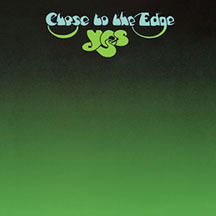
29. Close to the Edge – Yes (1972)
A few years ago, I acquired a copy of Hermann Hesse's Siddhartha, and read it cover to cover. It was a rare, transcendent and transformational experience; upon finishing the book, I felt instantly electrified with a keen understanding of the tapestry of joy and suffering which we call life. Close to the Edge is Siddhartha in musical form, more or less. The album's title track was inspired by the book, and through its nearly 19 minutes of jaunty prog grooves— including a truly divine and thunderous church organ interlude— it actually does manage somehow to replicate the vivified sensation I got from reading the book. There are only two other tracks on the album: the sweeping "And You and I", and the churning "Siberian Khatru", both of which are brilliant in their own right. Much ado has been made of the excesses and pretentiousness which cast the original wave of 60s and 70s prog rock into the realm of unintentional self-parody. True to its name, however, Close to the Edge gets right up on that line without ever crossing it, instead finding the perfect sweet spot between too much and not enough.
Prime cuts: "Close to the Edge", "Siberian Khatru"
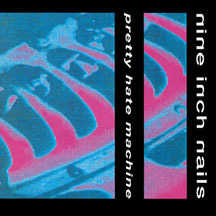
28. Pretty Hate Machine – Nine Inch Nails (1989)
And thus, a legend was born. Being the earliest of Trent Reznor's work under the nom de guerre of Nine Inch Nails, Pretty Hate Machine is a recording that (it always seemed to me) still has the vitality of a new band to it. It's an exception to so many of the ground rules that govern Reznor's later work. It's sappily emotional in ways that The Downward Spiral wasn't. It's easily dated by its sound palette in a way that The Fragile isn't. And for all its discontent, it's still quite upbeat and danceable at times, in a way that Year Zero never could be. Pretty Hate Machine sounds exactly as one would imagine Reznor's work to have sounded in the 1980s, which is to say, a higher ratio of synthpop in its DNA. It may have been eclipsed by some subsequent releases, but it is still a solid album, and a true classic of early industrial music.
Prime cuts: "Head Like a Hole", "Terrible Lie"

27. Intimacy – Bloc Party (2008)
Say what you will. I know some people listened to this album (particularly its leading single, "Mercury"), and weren't feeling it, especially compared to the band's earlier material. I get that. It was a bold change of pace for Bloc Party, and I'm not sure if it was completely successful in what it was trying to accomplish. But there were enough great moments on this album— the chaotic percussion warfare and guitar bombast of opener "Ares", the heartwrenchingly bittersweet "Biko", and of course, "Talons", which quickly became my second favorite Bloc Party after "Banquet"— that the missteps didn't matter to me. When I got my copy of this album, I played it ad nauseum, until I knew it intimately (ba dum tssh). I can't hate on it for experimenting, or for being too sentimental. Both of those things are things I actually sort of applaud in music, and wish I saw more. And I got a little extra bonus with my copy, since my version also included "Letter to My Son", "Your Visits Are Getting Shorter", and Bloc Party's first foray into house music, "Flux". Moreover, I have a real attachment to the album now, because it represents a time in my life that was actually pretty happy for me, which has been a bit of a rarity— I was a student at Emily Carr, completely in my element, I had a fulfilling social life, and I was just generally enjoying my surroundings in Canada. So maybe I'm biased a little, but there was just no way I could leave this album off the list.
Prime cuts: "Talons", "Biko"
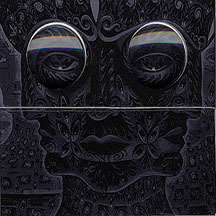
26. 10,000 Days – Tool (2006)
Here's how you know we're getting closer to #1: Tool albums start showing up. Aside from a single album by A Perfect Circle and a few guest appearances on other albums, Maynard James Keenan hasn't really made any appearances yet. That changes now. Ostensibly Maynard's tribute to his late mother, the title of 10,000 Days refers to the nearly three decades between her paralysis due to an accident and her passing. Coming from a band that found its niche in extremely cerebral music, the album was surprisingly personal and emotional. Of course, there is still some heady fare here, as in openers "Vicarious" and "Jambi". And their trademark offbeat humor is on display as well, as "Lost Keys (Blame Hofmann)" briefly sets up a scenario involving an LSD-induced hospital visit, and then segues into "Rosetta Stoned", with the stoner in question describing (in barely coherent terms) being visited by extraterrestrials and anointed 'the chosen one'. Sadly, at 11 years and counting, 10,000 Days is still the band's most recent release (and we're all hoping to see a new one sooner than 10,000 days)— but at least we have a solid album to listen to while waiting.
Prime cuts: "Vicarious", "Rosetta Stoned"

25. Good News for People Who Love Bad News – Modest Mouse (2004)
This album has the unique distinction of being doubly nostalgic for me— that is, it simultaneously conjures up strong memories of two different periods in my life. The first is from my freshman year at Ringling College back in 2004, right after the album was released. I recall very distinctly that one of my roommates owned it, and played it in the car while we went on grocery runs. At that time, I wasn't sure what to think of it; Modest Mouse didn't really seem to have a place in my music collection, among my Tool and Metallica and Nine Inch Nails. By the time I heard it again, though, I was coming around. It didn't hurt that my second real experience with Good News… was around 2007, when I realized my friend Laurie was a fan of Modest Mouse. That instantly caused me to take another listen. And because I had both of those experiences soundtracked by the same album, I now strongly associate Good News... with my coming-of-age and independence; after all, both points in my life were times when I had gained a new level of self-reliance and freedom.
Prime cuts: "Float On", "Ocean Breathes Salty"
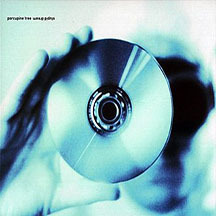
24. Stupid Dream – Porcupine Tree (1999)
As mentioned earlier, Porcupine Tree spent the majority of the 90s in the realm of psychedelia and space rock, filling the void left behind by the decline of Pink Floyd. Following the release of 1997's Signify, however, the band went through a massive recalibration in terms of its sound, shifting toward a much more straightforward radio-friendly alternative rock sound. Stupid Dream is the first album where this change is apparent. It's also the first to demonstrate Steven Wilson's long love/hate relationship with the recording industry; the album's lead single (and the band's very first charting song), "Piano Lessons", is an anthem of disillusionment with the over-commercialized nature of modern music and the 'stupid dream' of being able to reach the masses with an intelligent, heartfelt message, which works well as the album's thesis statement. My personal highlight on the album, however, is "Don't Hate Me", which is set apart from other Porcupine Tree songs up to that point by its slow, steady bass groove, its prominent flute and saxophone sections, and its tone of longing desperation. It was at this point where Porcupine Tree really started to develop into a force with which to be reckoned.
Prime cuts: "Don't Hate Me", "Piano Lessons"
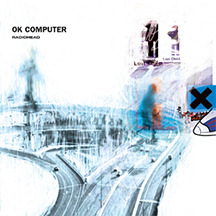
23. OK Computer – Radiohead (1997)
How does one add anything new to a discussion about an album that is widely regarded as one of the greatest albums of the past 20 years? This is an album that has been constantly picked apart and analyzed by music journalists, favorably compared to Dark Side of the Moon, and placed on so many "Greatest Albums" lists that it is in serious danger of becoming as much a cliché as Nevermind or Sgt. Pepper's. Can it possibly live up to all of that hype? Well… yeah. At least, I think so. In retrospect, I think some of the hype is due to the fact that it was really the final album of Radiohead's alt-rock period, where they sounded like what people expected them to sound like— i.e., the second coming of the British Invasion, for a Gen X audience. In contrast, OK Computer's immediate successor was such a radical about-face that it scared off many fans who were looking for a logical progression along the same vector (and, it could be argued, launched Coldplay's career as a result). But underneath all of the hype, and behind the iconic songs about unborn chicken voices and detuned radios, there really is a substantive, smart, emotionally powerful piece of artwork here. This is the rare moment where the stars align, and there is a perfect confluence of mainstream appeal, critical acceptance, and genuinely thought-provoking artistry.
Prime cuts: "Paranoid Android", "Karma Police"
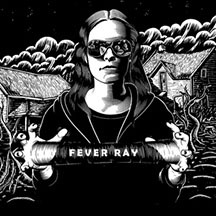
22. Fever Ray – Fever Ray (2009)
Fever Ray was the name given to the solo project of Karin Dreijer Andersson of The Knife, already mentioned earlier in this list. The self-titled album begins with the relentless droning of "If I Had a Heart", a song which, by its bellicose, minimalistic melody, seems to portend an Apache raid. The majority of the album seems to have a pall of inky darkness over it— not so much a depressing darkness, as a black haze that obscures sight and shrouds everything in shadow. A few bright shafts of light occasionally break through, as in the childlike "When I Grow Up" and "Seven" and the quirkily upbeat "Triangle Walks", but duskier tracks like "Concrete Walls" and "Keep the Streets Empty for Me" are the norm.
Prime cuts: "Triangle Walks", "Keep the Streets Empty for Me"
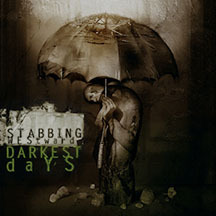
21. Darkest Days – Stabbing Westward (1998)
Sometimes, no matter how much you try to keep moving forward, it's inevitable that there will be vulnerable moments. I've had a lot of those. For me, the battle with depression has been a long and draining one. And when I feel myself spiraling downward, like I break everything I touch, often one of the best ways for me to work through it is to envelop myself in music that seems as bleak as me. On many occasions, Darkest Days has truly been a savior. With 16 tracks, it is by a wide margin Stabbing Westward's longest release; it is also their magnum opus, the true highlight of their catalog of industrial rock. Darkest Days is a concept album based on the experience of a break-up, as the relationship moves through unhealthy self-sabotaging and fixation, into a post-separation cycle of pain, regret, depression, anger, and finally, reluctant acceptance. While singles "Save Yourself" and "Sometimes It Hurts" may be among the band's most recognized material, and "How Can I Hold On" deserves an honorable mention for its wicked mixture of computer beats and Christopher Hall's unmistakable vocals, it is the heartrending final track, "Waking Up Beside You", which really is praiseworthy for being a stellar composition— possibly the greatest song the band ever produced. Darkest Days has served me well as an emotional counterbalance from my teen years into my thirties. For that reason, I see it as an indispensable part of my music library.
Prime cuts: "Save Yourself", "Waking Up Beside You"
We’re getting much closer now! Next time: we crack the Top 20, with Part 5 (#20-11)!
0 notes